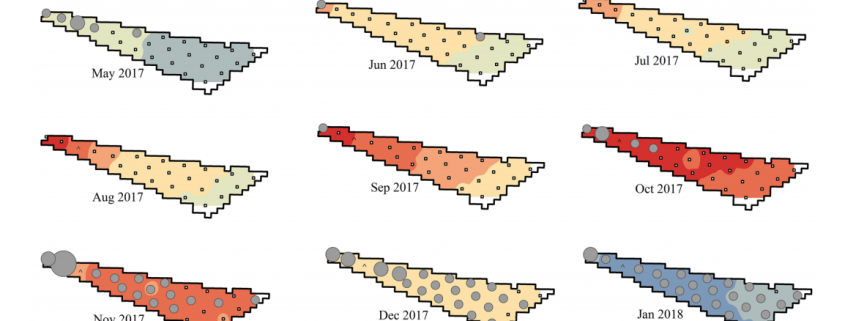Endangered Atlantic Sturgeon in the New York Wind Energy Area: implications of future development in an offshore wind energy site
By Enzo Newhard, SRC intern
The environmental benefits of renewable energy sources have been well established as the “pro green” discourse emphasizes the importance of eliminating our input of greenhouse gasses into the environment. The negative impact renewable energy development may have on the environment, however, has not been as thoroughly discussed. Burning fossil fuels releases harmful gasses into the atmosphere adding to the greenhouse effect and alters global ecosystem chemistries. Renewable sources’ generally have no waste product but due to their lower efficiency the installations need to take up a much larger area. However, it is largely unknown how some of these instillations could impact the environment in which they are installed especially ones in the ocean. A paper by Evan Corey Ingram, Robert M. Cerrato, Keith J. Dunton, and Michael G. Frisk, titled Endangered Atlantic Sturgeon in the New York Wind Energy Area: implications of future development in an offshore wind energy site, lays the groundwork for assessing the disturbances the development of an offshore wind farm may have on local populations of Atlantic Sturgeon.
The Atlantic Sturgeon is an endangered anadromous fish which is the species of concern for this paper as it is believed to be present in the waters slotted for the development of the New York Wind Energy Area (NY WEA). 133 Atlantic Sturgeon were caught and fitted with acoustic transmitters to record and track their movements in the WEA. Sturgeon were regularly detected throughout the study period except from July-September when abundance was low. Both temporal and spatial variations in their distribution were observed with the majority of detections occurring at the nearshore receivers except for periods of high abundance where the fish seemed more uniformly distributed throughout the WEA (Ingram et. al. 2019).

Figure 1. “Detection count (top panel) and unique transmitter count (bottom panel) of Atlantic Sturgeon detected on acoustic transceivers in the New York Wind Energy Area study site (Equinor, Lease OCS-A 0512). Transceivers are represented by increasing distance from shore; note that intervals are not equal.” (Source: Ingram et al. 2019)
Most of the research regarding sturgeon stocks has been done in riverine and estuarine environments, information about their population dynamics and foraging ecology in marine environments is largely unknown. This study provided a valuable baseline of sturgeon distribution and abundance in the future wind energy site and underscores the importance of long-term monitoring of offshore areas to enhance recovery efforts by locating important new habitats which have been underrepresented in current scientific literature.

Figure 2. “Monthly counts of unique Atlantic Sturgeon (represented by graduated symbols) detected at unique acoustic transceiver stations in the New York Wind Energy Area study site (Equinor, Lease OCS-A 0512) from November 2016 through January 2018. Monthly point values of average bottom temperature were compiled from transceiver metadata. The transceiver array operated throughout the entire course of the study with the exception of a single station indicated by (^) which was not recovered during the final download cruise; data for this station were unavailable for the months of August 2017–February 2018” (Source: Ingram et al. 2019)
Work Cited
E.C. Ingram, R.M. Cerrato, K.J. Dunton, M.G. Frisk 2019. Endangered Atlantic Sturgeon in the New York Wind Energy Area: implications of future development in an offshore wind energy site. Scientific Reports 9:12432



